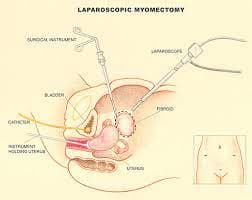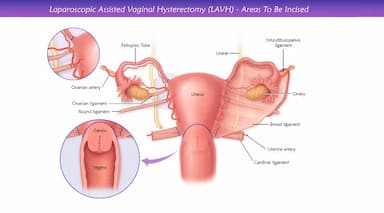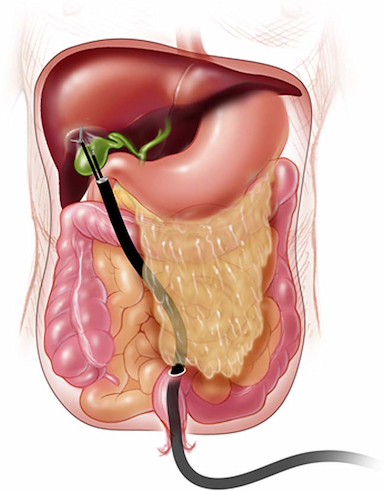
Salivary Gland Cancer Symptoms, Types, and Treatment
12 Oct, 2023
 Healthtrip Team
Healthtrip TeamSalivary gland cancer is a rare type of malignancy that develops in the glands responsible for producing saliva. Despite its infrequency, it can occur in individuals of various age groups. These cancers vary in types, each with distinct characteristics. Early detection is crucial for effective treatment. Treatment strategies depend on factors such as cancer type, stage, and the patient's overall health. Understanding the unique aspects of salivary gland cancer is essential for improving outcomes in those affected.
Transform Your Beauty, Boost Your Confidence
Find the right cosmetic procedure for your needs.

We specialize in a wide range of cosmetic procedures

Types of Salivary Gland Cancer
1. Mucoepidermoid Carcinoma:
Mucoepidermoid carcinoma is one of the most common types of salivary gland cancer. It's a mixed tumor, meaning it contains a combination of mucous and epidermoid (skin-like) cells. The behavior of this cancer can vary, with some being slow-growing and others more aggressive. Symptoms may include a painless lump or swelling in the mouth.
2. Adenoid Cystic Carcinoma:
Adenoid cystic carcinoma is known for its slow but relentless growth. This type often infiltrates nerves, making complete surgical removal challenging. Despite its slow progression, it has a reputation for being persistent and recurring. Symptoms may include a firm, painless mass.
Most popular procedures in
Laparoscopic Cystect
Upto 80% off
90% Rated
Satisfactory

Laparoscopic Myomect
Upto 80% off
90% Rated
Satisfactory

LAVH
Upto 80% off
90% Rated
Satisfactory

NOTE
Upto 80% off
90% Rated
Satisfactory

CABG
Upto 80% off
90% Rated
Satisfactory

3. Acinic Cell Carcinoma:
Acinic cell carcinoma is a type of salivary gland cancer that typically grows slowly. It often arises in the parotid gland, which is the largest of the salivary glands. This cancer is characterized by cells that resemble the acinar cells responsible for producing saliva. Symptoms may include a painless lump in the affected gland.
4. Adenocarcinoma:
Adenocarcinoma is a type of cancer that originates in the glandular cells of the salivary glands. These cells are responsible for producing and secreting fluids, such as saliva. Adenocarcinoma can occur in different forms, and its symptoms may vary based on the specific subtype and location within the glands.
5. Polymorphous Low-Grade Adenocarcinoma:
Polymorphous low-grade adenocarcinoma is a less common but distinct subtype of salivary gland cancer. It often occurs in the minor salivary glands and has a characteristic microscopic appearance. Despite being low-grade, meaning it looks less aggressive under the microscope, it can still behave in a locally invasive manner.
Symptoms and Signs:
- Persistent pain in the face or mouth
- Swelling or a lump in the mouth or neck
- Numbness or weakness in the face
Causes of Salivary Gland Cancer:
- Genetic factors
- Exposure to radiation
- Viral infections
Diagnosis:
- Imaging Tests (CT Scan, MRI):
- Imaging tests such as computed tomography (CT) scans and magnetic resonance imaging (MRI) provide detailed pictures of the salivary glands. These images help in visualizing the size, location, and characteristics of any tumors or abnormalities.
- Biopsy:
- A biopsy involves the removal of a small sample of tissue from the suspicious area for examination under a microscope. This helps in determining whether the growth is cancerous, the type of cancer, and its aggressiveness.
- Fine-Needle Aspiration (FNA):
- Fine-needle aspiration involves using a thin, hollow needle to extract a small sample of cells from the suspicious area. This sample is then examined to identify the nature of the cells, helping in the diagnosis of the type of salivary gland cancer.
Treatment Options:
- Surgery:
- Surgical removal of the tumor is a common approach. The extent of surgery depends on the type, size, and location of the tumor. It may involve removing part or all of the salivary gland.
- Radiation Therapy:
- High-dose radiation is used to target and kill cancer cells. It is often employed after surgery to eliminate any remaining cancer cells or as a primary treatment when surgery is not feasible.
- Chemotherapy:
- Chemotherapy involves the use of drugs to kill or slow the growth of cancer cells. It is commonly used in cases where the cancer has spread beyond the salivary glands or when other treatments are not effective.
- Targeted Therapy:
- Targeted therapy uses drugs that specifically target certain molecules involved in the growth of cancer cells. This approach aims to interfere with cancer cell growth while minimizing damage to normal cells.
Risk Factors:
- Age:
- Salivary gland cancer can occur at any age, but the risk tends to increase with advancing age.
- Radiation Exposure:
- Exposure to ionizing radiation, especially around the head and neck, is a known risk factor for salivary gland cancer.
- Family History:
- Individuals with a family history of salivary gland cancer may have a higher risk, suggesting a possible genetic predisposition.
- Workplace Exposures (e.g., certain types of dust):
- Some workplace environments, particularly those with exposure to specific types of dust or carcinogenic substances, may contribute to an increased risk of salivary gland cancer.
Complications:
- Spread to Nearby Structures:
- If the cancerous cells invade nearby structures, it can lead to complications such as difficulty in swallowing, speaking, or other functional impairments.
- Recurrence:
- Salivary gland cancer, depending on its type, can have a tendency to recur even after treatment, requiring ongoing monitoring.
- Treatment Side Effects:
- Common side effects of cancer treatments (surgery, radiation, chemotherapy) can include fatigue, nausea, and other physical and emotional challenges.
Preventive Measures:
- Avoiding Known risk Factors:
- Taking steps to minimize exposure to known risk factors, such as reducing radiation exposure and adopting a healthy lifestyle, can help lower the risk.
- Regular Dental Check-ups:
- Regular dental check-ups can aid in early detection and monitoring of any abnormalities in the oral cavity.
- Genetic Counseling for At-risk Individuals:
- Individuals with a family history of salivary gland cancer may benefit from genetic counseling to understand their risk and explore preventive strategies.
Outlook/Prognosis:
Survival rates vary based on cancer type, stage, and overall health. Early diagnosis improves the chances of successful treatment and better outcomes.
Besides survival, the focus is on post-treatment quality of life. Preserving oral function and addressing emotional well-being contribute to a positive post-treatment experience.
After understanding the nuances of salivary gland cancer, emphasizing early detection, and considering both survival rates and quality of life post-treatment are crucial for a comprehensive approach to managing this condition. Regular check-ups and awareness play key roles in improving outcomes.
Wellness Treatment
Give yourself the time to relax
Lowest Prices Guaranteed!

Lowest Prices Guaranteed!



